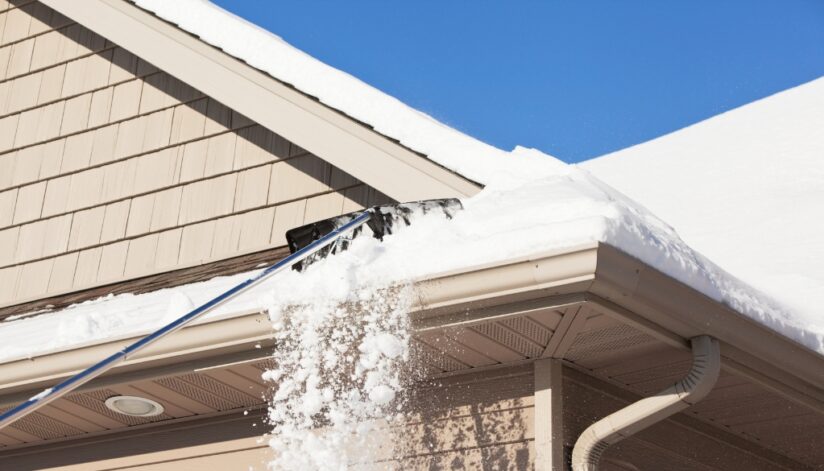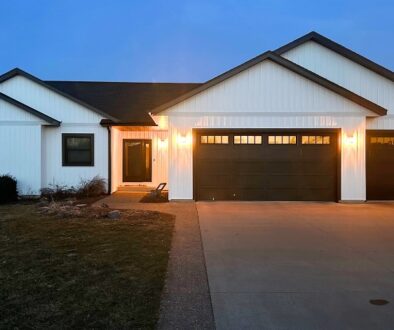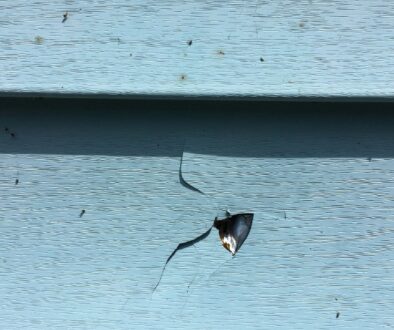Preparing Your Roof For Winter In Wisconsin
As the cold Wisconsin winter approaches, preparing your roof for the harsher months is crucial to protect your home from potential damage. Snow, ice, and fluctuating temperatures can all impact the integrity of your roof, leading to costly repairs if not addressed early. Follow these tips from our roofing experts to help winterize your roof and make sure it can withstand the challenges of Wisconsin’s freezing conditions.
Conduct A Thorough Roof Inspection
The first step to winterize your roof is performing a comprehensive inspection. Start by visually checking for any obvious signs of damage, such as missing, curling, or cracked shingles. Damaged shingles can expose your roof to moisture, which may lead to leaks when snow melts.
It’s recommended to hire a professional roofer to conduct a more in-depth inspection. A professional will look for:
- Shingle Damage: Any loose or missing shingles should be repaired or replaced to prevent water from seeping into your roof deck.
- Flashing Condition: Ensure the flashing around chimneys, vents, and other roof penetrations is in good shape. If the flashing is damaged or improperly sealed, water can infiltrate your roof.
- Gutter Health: Gutters and downspouts should be securely fastened and free of debris to allow proper water drainage during melting periods.
Clean Your Gutters And Downspouts
One of the most common causes of winter roof problems is clogged gutters. Leaves, twigs, and other debris can build up in your gutters during the fall, preventing proper drainage. When snow melts or rain falls, the water can overflow, leading to ice dams, leaks, and potential roof damage.
To prevent this, make sure to:
- Remove All Debris: Clean out gutters and downspouts thoroughly, ensuring water can flow freely.
- Check For Leaks: Inspect the gutter system for any cracks or leaks that may need repair before the first snowfall.
- Install Gutter Guards: Consider installing gutter guards to reduce the amount of debris buildup, making it easier to maintain your gutters through the season.
Trim Overhanging Branches
Overhanging tree branches can be a major problem during winter storms. Snow and ice accumulation on branches can cause them to snap, potentially damaging your roof or even puncturing it. Trimming these branches back not only reduces the risk of falling debris but also helps prevent additional leaves from clogging your gutters.
Make sure to:
- Trim Back Large Branches: Cut back any branches that are within close proximity to your roof or hanging over it.
- Remove Dead Trees: If there are any dead or weakened trees near your home, consider having them removed to avoid unexpected damage during winter storms.
Insulate And Ventilate Your Attic
Proper attic insulation and ventilation play a significant role in maintaining your roof’s health during winter. Poor insulation can cause heat to escape from your home and warm the roof, leading to snow melting and forming ice dams. Ice dams can block water from draining off the roof, which can lead to leaks and structural damage.
Here’s how to address this issue and winterize your roof:
- Check Insulation Levels: Make sure your attic is well-insulated to reduce heat loss. Adding more insulation can help regulate the temperature and prevent roof-warming.
- Ensure Ventilation: Proper ventilation helps maintain a balanced temperature in the attic, reducing the risk of ice dam formation. Inspect roof vents to ensure they are clear of blockages.
Address Roof Leaks And Seal Gaps
Winter is not the time to let minor roof leaks go untreated. If you’ve noticed any leaks or damp spots in your attic or ceiling, address them before the cold sets in. Water damage can quickly worsen during the winter, especially as snow and ice melt on your roof.
- Repair Leaks: Have a professional identify and fix any existing leaks. Address any areas where water might be seeping in, such as around chimneys or skylights.
- Seal Gaps: Make sure to seal any gaps or cracks in the roof to prevent cold air from entering and heat from escaping. This will also help to prevent pests from entering your attic during the colder months.
Prepare For Snow And Ice Removal
Wisconsin winters are notorious for heavy snowfall, and large amounts of snow on your roof can cause several issues. Excessive snow can add significant weight to your roof, leading to potential structural stress and even collapse in extreme cases. Additionally, snow and ice buildup can increase the risk of ice dams forming.
- Have A Roof Rake Handy: A roof rake allows you to safely remove snow from the roof without needing to climb onto it. After heavy snowfalls, use the rake to clear excess snow, especially near the roof’s edge.
- Avoid DIY Roof Clearing: While it’s tempting to try and clear the roof yourself, it’s best to leave large snow removal jobs to professionals who can do it safely.
Keep An Eye On Ice Dams
Ice dams are a common problem in Wisconsin, and they occur when heat from your attic melts snow on the roof. The melted snow refreezes at the eaves, creating a barrier that prevents water from draining off the roof. This trapped water can seep into your home, causing leaks and interior damage.
To prevent ice dams:
- Maintain Proper Insulation: Ensure your attic is properly insulated to keep warm air from reaching the roof.
- Use Heat Cables: Heat cables installed along the edge of your roof can help prevent ice dams by melting snow and ice before they become a problem.
The Ledegar Roofing Advantage
At Ledegar Roofing, we understand the unique challenges that Wisconsin winters can bring to your roof. Our team of professionals is equipped to help you winterize your roof and prepare for the colder months with comprehensive inspections, repairs, and maintenance services. Whether you need help clearing snow, addressing leaks, or ensuring your roof is properly insulated, Ledegar Roofing is here to assist the Coulee Region.
Contact us today for a free consultation and ensure your roof is ready to handle whatever the Wisconsin winter throws its way.




